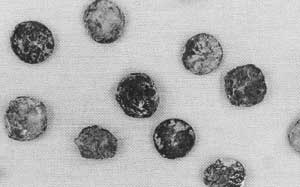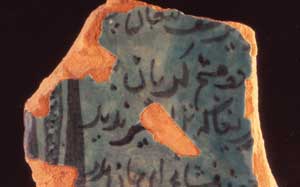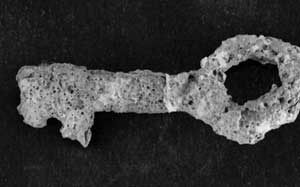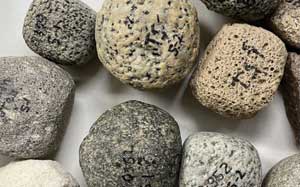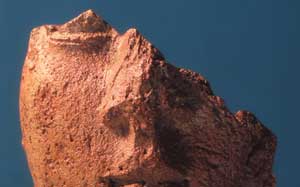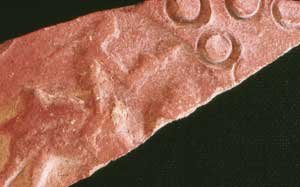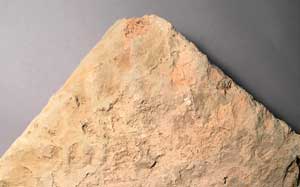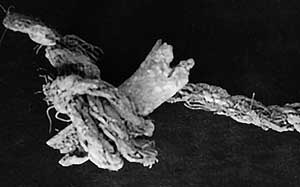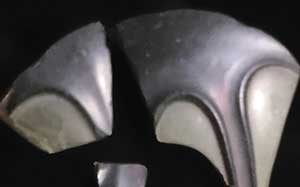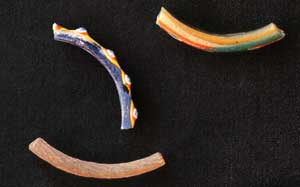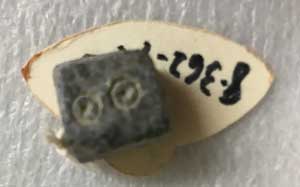Objects
Archaeologists study material culture, the objects left behind by previous inhabitants of an area. They help us understand how people thought and behaved at times prior to ours, even though we may not fully understand either. Our collection of objects from ten years of fieldwork is extensive. We have included here some of the highlights that help us understand the occupants of Sistan over the past 5,000 years.
Coins
Over 400 coins were found during the course of the project, almost all were discovered on the ground surface. They ranged in date from the 2nd to the 17th century CE. While a few silver…
Inscriptions
Inscribed material from Sistan was limited, as would be expected of the finds from a surface survey. The most notable material was the bilingual Greek-Aramaic inscription from the excavation of the well at Khwaja Ali…
Metal Tools and Weapons
The dry atmosphere of Sistan allowed us to find a variety of tools made of iron, bronze, and copper, though the environment of the surface in the survey area meant that most metal implements were…
Stone Objects
Some stone objects found were plainly utilitarian, others more decorative. Most were made of local stone, steatite from the hills to the south, basalt from volcanic pillows like Kuh-i Khwaja, and travertine from the mountains…
Figurines
Ceramic figurines were reasonably common from the Parthian period. Most were broken pieces of a horse and rider combination, but a variety of figurines representing other animals were found on the surface as well. These…
Seals and Seal Impressions
Seals are used as marks of identity on many objects in the ancient world and their impressions on bits of clay and on clay vessels often indicate ownership. We found a handful of seals at…
Building Materials and Architectural Decorations
In the absence of stone as a common building material in the Helmand Valley, buildings were constructed either of pakhsa (packed mud), sun-dried adobe bricks, or baked bricks. Changes in the sizes and styles of…
Perishable Objects
Perishable objects of any significant age are rarely found in archaeological contexts, though they are more likely to survive in a very dry environment like Sistan than elsewhere. We were fortunate to recover a group…
Glass Vessels
We are only at the beginning of our study of the glass objects from the project. Few were found intact in the field, but many sites contained numerous small fragments in various designs and colors.…
Jewelry
Most jewelry pieces found in the Sistan survey were of three kinds: glass bangles, simple bronze finger rings, and individual ceramic beads separated from the rest of the string. Excavations at several sites produced several…
Unusual Objects
Unique items included a miniature ceramic tower from the Qala 4 area and the base of some other statue excavated from Lat Qala. Several steatite dice were found, including one from Qala 352. Outstanding was…



